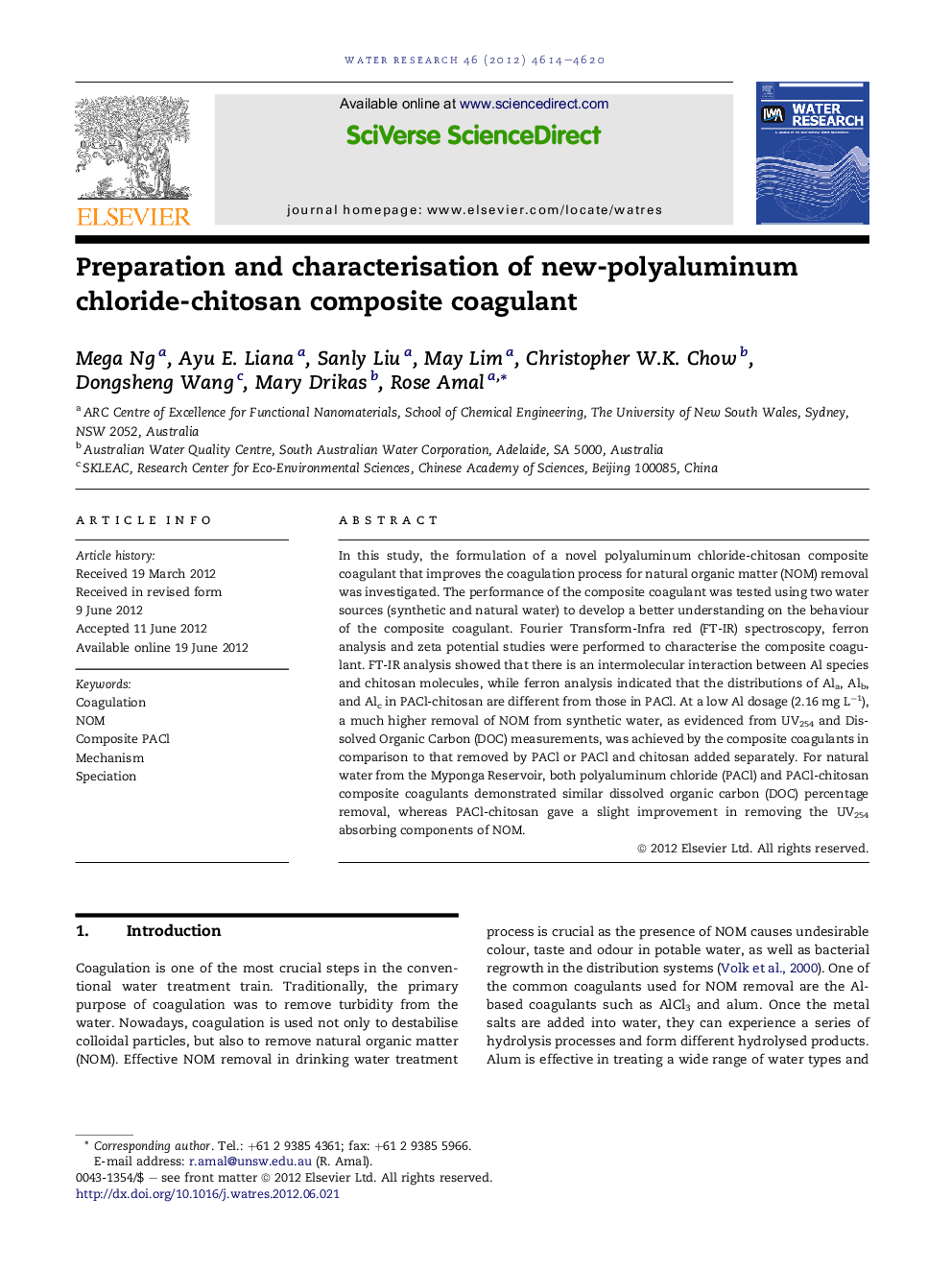| Article ID | Journal | Published Year | Pages | File Type |
|---|---|---|---|---|
| 4482981 | Water Research | 2012 | 7 Pages |
In this study, the formulation of a novel polyaluminum chloride-chitosan composite coagulant that improves the coagulation process for natural organic matter (NOM) removal was investigated. The performance of the composite coagulant was tested using two water sources (synthetic and natural water) to develop a better understanding on the behaviour of the composite coagulant. Fourier Transform-Infra red (FT-IR) spectroscopy, ferron analysis and zeta potential studies were performed to characterise the composite coagulant. FT-IR analysis showed that there is an intermolecular interaction between Al species and chitosan molecules, while ferron analysis indicated that the distributions of Ala, Alb, and Alc in PACl-chitosan are different from those in PACl. At a low Al dosage (2.16 mg L−1), a much higher removal of NOM from synthetic water, as evidenced from UV254 and Dissolved Organic Carbon (DOC) measurements, was achieved by the composite coagulants in comparison to that removed by PACl or PACl and chitosan added separately. For natural water from the Myponga Reservoir, both polyaluminum chloride (PACl) and PACl-chitosan composite coagulants demonstrated similar dissolved organic carbon (DOC) percentage removal, whereas PACl-chitosan gave a slight improvement in removing the UV254 absorbing components of NOM.
Graphical abstractFigure optionsDownload full-size imageDownload high-quality image (139 K)Download as PowerPoint slideHighlights► Synthesis of a novel polyaluminum chloride-chitosan composite coagulant was achieved. ► Chitosan in composite coagulant was shown to improve the coagulation performance. ► There is an intermolecular interaction between Al and chitosan in the composite coagulant.
